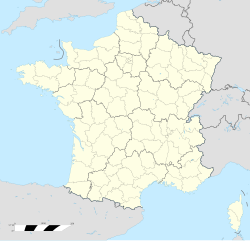Top Qs
Timeline
Chat
Perspective
Defence of Festubert
First World War engagement on Western Front From Wikipedia, the free encyclopedia
Remove ads
The Defence of Festubert was an engagement on the Western Front early in the First World War when Indian and British battalions of the 7th (Meerut) Division of the Indian Army defended the village of Festubert against a German attack from 23 to 24 November 1914. It was one of the first actions in the war in which an attack was made against a prepared defensive position. The British and Indian regiments that took part were awarded the battle honour Festubert 1914.
Remove ads
Battle
23–24 November
The fighting around Ypres subsided in mutual exhaustion by 22 November and for about three weeks bad weather also inhibited operations apart from artillery-fire, bombing and sniping. At the end of the month the British made several night raids and on 23 November, the German Infantry Regiment 112 captured 800 yd (730 m) of trench east of Festubert in the Indian Corps area.[1] The Indians counter-attacked through the night and recovered the trenches. The Defence of Festubert was one of the first attacks on an organised trench system. Most notably a night attack also occurred, involving mainly the 129th Duke of Connaught's Own Baluchis and the Mazhabi Sikhs of the 34th Royal Sikh Pioneers Regiment and the 1st Battalion Manchester Regiment. The battle was a costly British victory, the lost trench was recaptured but there were many casualties in the 129th Baluchis battalion and the 1st Manchesters.[2]
Remove ads
Order of battle
Summarize
Perspective
October 1914, 7th (Meerut) Division[a]
GOC: Lieutenant-General Charles Alexander Anderson
GSO1: Colonel Claud Jacob
Dehra Dun Brigade GOC: Brigadier-General C. E. Johnson
- 1st Battalion Seaforth Highlanders
- 6th Jat Light Infantry
- 129th Baluchis
- 2/2nd King Edward’s Own Gurkha Rifles (The Sirmoor Regiment)
- 1/9th Gurkha Rifles
Garhwal Brigade GOC: Major-General Henry Keary
- 2nd Battalion Leicestershire Regiment
- 1/39th Garhwal Rifles
- 2/39th Garhwal Rifles
- 2/3rd Gurkha Rifles
Bareilly Brigade GOC: Major-General F. Macbean
Divisional Mounted Troops
Divisional Artillery
- IV Brigade, Royal Field Artillery (replaced V Brigade, transferred to 3rd (Lahore) Division 17 October 1914)
- 7th, 14th and 66th Batteries, IV Brigade Ammunition Column
- IX Brigade, RFA
- 19th, 20th and 28th Batteries, IX Brigade Ammunition Column
- XIII Brigade, RFA (replaced XI Brigade, transferred to 3rd (Lahore) Division 17 October 1914)
- 2nd, 8th and 44th Batteries, XIII Brigade Ammunition Column
- 110th Heavy Battery, Royal Garrison Artillery
- Heavy Battery Ammunition Column
- Meerut Divisional Ammunition Column
Engineers
- 3rd and 4th Companies, 1st King George’s Own Sappers and Miners
Signals Service
- Meerut Signal Company
Divisional Pioneers
Supply and Transport:
- Meerut Divisional train
Medical Units:
- 19th and 20th British Field Ambulances
- 128th, 129th and 130th Indian Field Ambulances
Remove ads
Notes
Footnotes
References
Further reading
External links
Wikiwand - on
Seamless Wikipedia browsing. On steroids.
Remove ads


